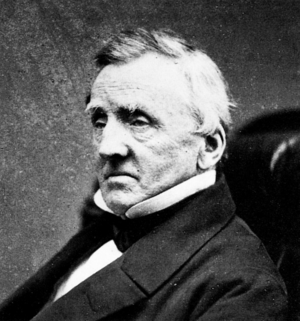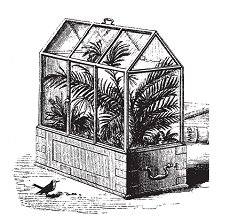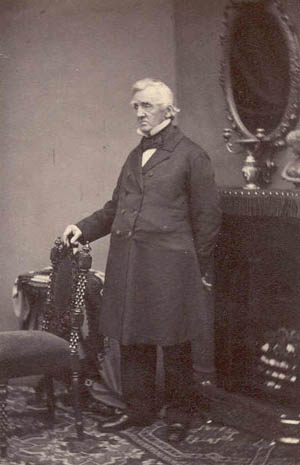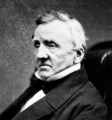Nathaniel Bagshaw Ward facts for kids
Quick facts for kids
Nathaniel Bagshaw Ward
|
|
|---|---|
 |
|
| Born | 1791 |
| Died | 4 June 1868 |
| Occupation | Doctor |
| Known for | Inventor of the glass plant-cases |
Nathaniel Bagshaw Ward (born 1791 – died 4 June 1868) was an English doctor. He became famous for inventing a special glass case used to grow and transport plants. This invention is known as the Wardian case.
Contents
Who Was Nathaniel Ward?
Nathaniel Ward was born in London. His father, Stephen Smith Ward, was also a doctor. Not much is known about Nathaniel's early life. When he was about 13, he might have traveled to Jamaica. This trip could have sparked his interest in plants.
Dr. Ward worked as a doctor in a busy, less wealthy part of East London. In his free time, he loved studying plants (botany) and insects (entomology). He often went to Cobham, Kent, for vacations to enjoy nature.
He became a member of the Royal College of Surgeons in London in 1814. Later, in 1852, he joined the Linnean Society, which is a famous group for natural scientists.
Ward's Family Life
Nathaniel Ward had four sons: Stephen, Nathaniel, John, and Richard. All of them followed in their father's footsteps and became doctors or surgeons. Stephen and Nathaniel worked with their father in his medical practice. John joined the Royal Navy as a surgeon and served bravely during the Crimean War. Richard, the youngest, had his own medical practice in Central London.
The Amazing Wardian Case
Dr. Ward made an important discovery in 1829. He had put a sphinx moth chrysalis (a pupa, like a cocoon) in some damp soil inside a sealed bottle. A week later, he noticed something surprising: a small fern and a grass seedling had started to grow from the soil!
He became very curious. He saw that water vapor from the soil would rise and condense on the inside of the bottle during the day. Then, as it cooled, the water would drip back down into the soil. This kept the plants inside the bottle perfectly moist all the time.
How the Wardian Case Changed Plant Transport
Ward began experimenting with these glass cases for growing plants in 1830. His invention, the Wardian case, became very popular for shipping plants around the world. Before his invention, many plants died during long sea voyages because of dry air, salt spray, or lack of fresh water.
In 1833, a plant nursery owner named George Loddiges used Wardian cases to send plants from Australia. He reported amazing results: "Before, I used to lose 19 out of 20 plants I imported. Now, 19 out of 20 plants survive!" This showed how revolutionary the Wardian case was for moving plants safely.
Dr. Ward also tried to build a larger greenhouse based on his Wardian case idea at his garden in Clapham. However, some people, like John Lindley from the Gardeners' Chronicle, pointed out that if a greenhouse was opened and closed often, it wasn't truly a "Wardian case" anymore.
In 1854, Dr. Ward gave a lecture about his plant preservation method to the Royal Society at the Chelsea Physic Garden. He also studied tiny things using microscopes and helped improve the Chelsea Physic Garden as a board member. He was elected a fellow of the Royal Society in 1852, which is a great honor for scientists.
Nathaniel Bagshaw Ward passed away in St Leonards, Sussex, in 1868. He is buried in an unmarked grave at West Norwood Cemetery.
A Plant Named After Ward
To honor his contributions, two botanists, William Henry Harvey and William Jackson Hooker, named a species of moss from South Africa after him in 1837. They called it Wardia.
Images for kids




